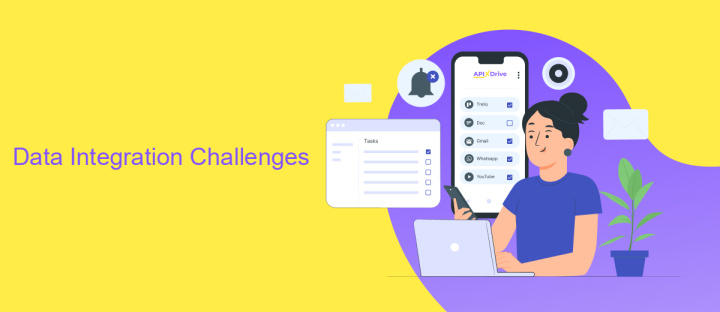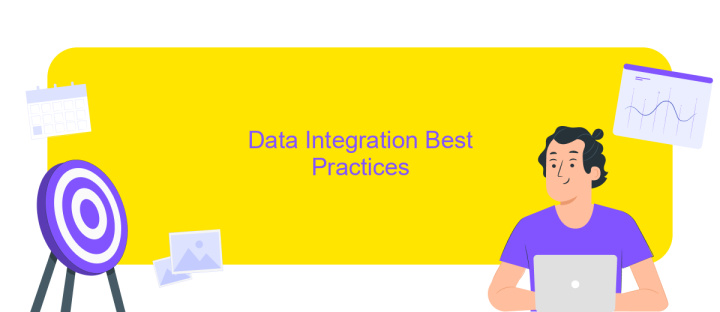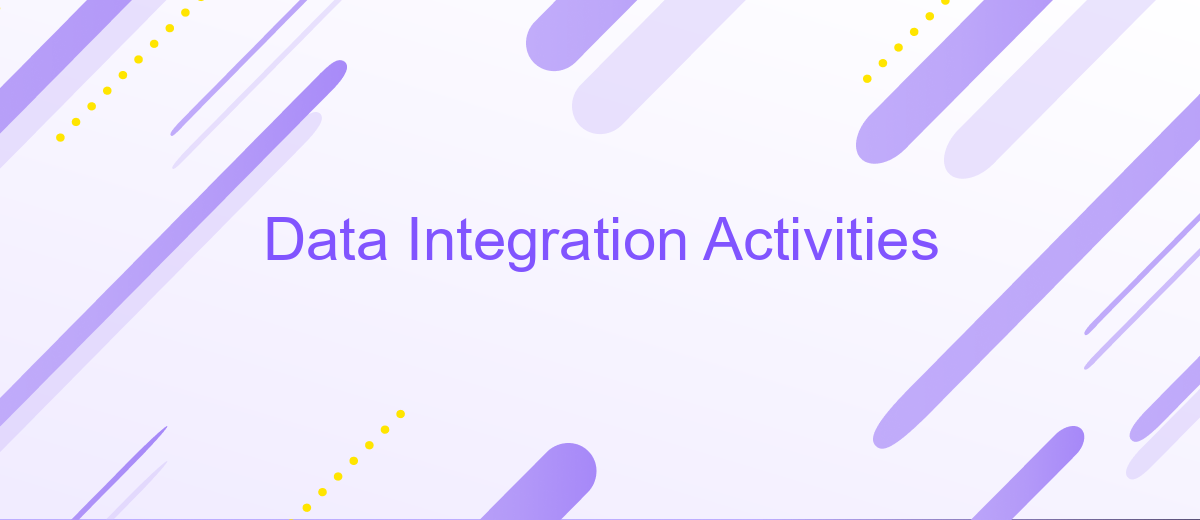Data Integration Activities
Data integration is a crucial aspect of modern business operations, enabling seamless connectivity and coherence between disparate data sources. This article explores various data integration activities, highlighting their importance in ensuring data accuracy, consistency, and accessibility. By understanding these activities, organizations can streamline their processes, enhance decision-making, and gain a competitive edge in today's data-driven landscape.
Data Integration Overview
Data integration is a critical process that involves combining data from different sources to provide a unified view. This practice is essential for businesses to make informed decisions based on comprehensive data insights. By integrating data, organizations can streamline operations, enhance data quality, and improve overall efficiency.
- Data Consolidation: Combining data from multiple sources into a single repository.
- Data Transformation: Converting data into a consistent format for easier analysis.
- Data Cleansing: Removing inaccuracies and inconsistencies from data sets.
- Data Mapping: Aligning data fields from different sources to a common schema.
- Data Loading: Importing data into a target system or database.
Effective data integration enables seamless access to accurate and timely information, fostering better collaboration and decision-making across departments. It also helps in reducing data redundancy and ensuring data consistency, which are vital for maintaining data integrity. As businesses continue to generate vast amounts of data, the importance of robust data integration practices will only grow.
Data Integration Challenges

Data integration poses several challenges, primarily due to the diverse nature of data sources and formats. One significant issue is data inconsistency, where data from different sources may not align perfectly, leading to discrepancies. Ensuring data quality is another major hurdle, as poor-quality data can lead to incorrect insights and decisions. Additionally, integrating real-time data can be complex, requiring advanced technologies and robust infrastructure to handle continuous data streams effectively.
Another challenge is the technical complexity involved in setting up and maintaining integrations. This often requires specialized skills and knowledge, which can be a barrier for many organizations. Tools like ApiX-Drive can help mitigate these challenges by offering user-friendly interfaces and automated workflows that simplify the integration process. Security and compliance are also critical concerns, as integrating data from multiple sources increases the risk of data breaches and non-compliance with regulations. Addressing these challenges requires a comprehensive strategy that includes robust data governance and advanced integration tools.
Data Integration Best Practices

Effective data integration is crucial for ensuring seamless data flow and consistency across various systems. To achieve this, organizations should adopt best practices that streamline processes, enhance data quality, and ensure security.
- Define clear objectives: Establish specific goals and outcomes for your data integration efforts to ensure alignment with business needs.
- Ensure data quality: Implement data cleansing and validation processes to maintain high-quality data across all integrated systems.
- Use standardized formats: Adopt common data formats and protocols to facilitate smooth data exchange and interoperability.
- Automate processes: Utilize automation tools to reduce manual intervention, minimize errors, and improve efficiency.
- Monitor and audit: Regularly monitor data integration processes and conduct audits to identify and address any issues promptly.
By following these best practices, organizations can optimize their data integration efforts, leading to improved decision-making, operational efficiency, and overall business performance. Consistent evaluation and adaptation of these practices will ensure they remain effective in an ever-evolving data landscape.
Data Integration Tools and Technologies

Data integration tools and technologies are essential for combining data from different sources into a unified view. These tools facilitate the extraction, transformation, and loading (ETL) of data, ensuring that information is accurate and accessible for analysis. They help organizations streamline workflows, reduce redundancy, and improve decision-making processes.
Several tools and technologies are available to support data integration efforts. Each tool offers unique features and capabilities, catering to different business needs and technical requirements. Selecting the right tool depends on factors such as data volume, complexity, and the specific integration needs of the organization.
- ETL Tools: Talend, Informatica, Apache Nifi
- Data Warehousing: Amazon Redshift, Google BigQuery, Snowflake
- Data Virtualization: Denodo, Dremio, TIBCO Data Virtualization
- API Management: MuleSoft, Apigee, Postman
Incorporating these tools and technologies into your data integration strategy can significantly enhance data quality and accessibility. By leveraging the right combination of tools, organizations can ensure seamless data flow and support robust analytics and reporting capabilities.
Case Studies and Examples
One notable case study involves a retail company that successfully integrated its various data sources using ApiX-Drive. Initially, the company struggled with disparate systems for inventory management, customer relationship management (CRM), and sales tracking. By leveraging ApiX-Drive, they were able to seamlessly connect these systems, ensuring real-time data flow and consistency across platforms. This integration not only improved operational efficiency but also enhanced customer experience by providing accurate and timely information.
Another example is a healthcare organization that utilized data integration to streamline patient records and billing information. Previously, the organization faced challenges with fragmented data across different departments, leading to delays and errors in patient care. By implementing ApiX-Drive, they synchronized data from electronic health records (EHR), billing systems, and appointment scheduling software. This integration enabled healthcare providers to access comprehensive patient information quickly, resulting in better patient outcomes and optimized administrative processes.
FAQ
What is data integration?
Why is data integration important for businesses?
What are common challenges in data integration?
How can I automate data integration processes?
What should I consider when choosing a data integration tool?
Time is the most valuable resource in today's business realities. By eliminating the routine from work processes, you will get more opportunities to implement the most daring plans and ideas. Choose – you can continue to waste time, money and nerves on inefficient solutions, or you can use ApiX-Drive, automating work processes and achieving results with minimal investment of money, effort and human resources.

